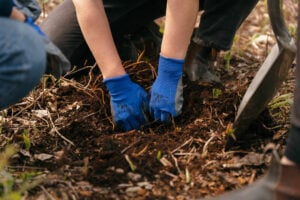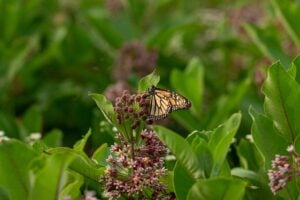The tidal mud flats of the Courtenay River’s K’ómoks Estuary on central Vancouver Island’s east coast aren’t what they used to be. Birds still feed and rest there, yet something that once made the area one of the most biologically diverse places in the province is vanishing: eelgrass.
The ecologically important species has been smothered and subsequently killed by bark falling from rafts of logs stored by a now defunct lumber mill and by sewage outflow from nearby towns. While the eelgrass can be replanted, the price of restoring the K’ómoks Estuary — let alone the almost 200 other B.C. estuaries that the Pacific Estuary Conservation Program found, in a 2007 study, to be degraded in some way — could run to tens of millions of dollars. And yet despite the cost, eelgrass could be poised for a comeback — one paid for by the carbon-offset market.
“If we can show that eelgrass beds sequester carbon, we could fund the rehabilitation work on the offset market,” says Paul Horgen, chair of Project Watershed, a group working to restore the K’ómoks Estuary. “We could do a pilot project here that could be used as a model for rehabilitating estuaries all along the B.C. coast.”
Research suggests that the plan could be feasible. A 2012 study published in Natural Geoscience found that a square kilometre of seagrass, of which eelgrass is a species, could store 83,000 tonnes of carbon (roughly equal to the annual carbon emissions of 16,600 Canadians) compared with the 30,000 tonnes that a forest of the same area could store.
Before offsets can be sold, however, those carbon-sequestration values need to be established in a verifiable way — something that has never been done for eelgrass. Project Watershed wants to raise $1 million to conduct a three-year study into the sequestration ability of eelgrass and saltwater marshes and how to rehabilitate these areas affordably. Coastal First Nations and the Climate Action Secretariat (CAS), the provincial agency responsible for reducing greenhouse- gas emissions, have expressed an interest in the plan.
“We already know eelgrass and wetlands mitigate the effects of wave action and flooding on shorelines,” says Tim Lesiuk, executive director of the CAS. “We know estuaries are valuable as nurseries for fish stocks. If we can show they also hold promise for long-term and affordable carbon sequestration, it will be a triple win.”





